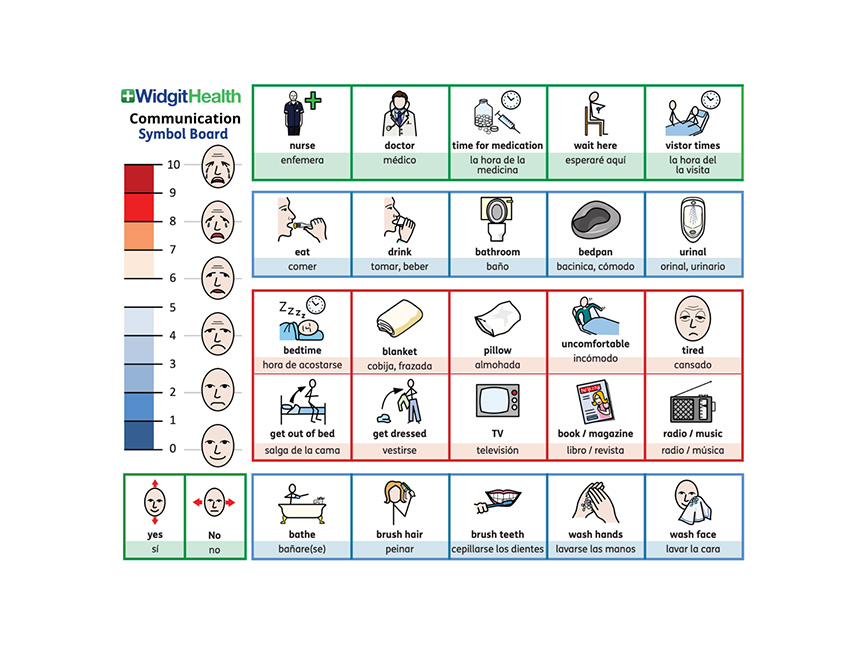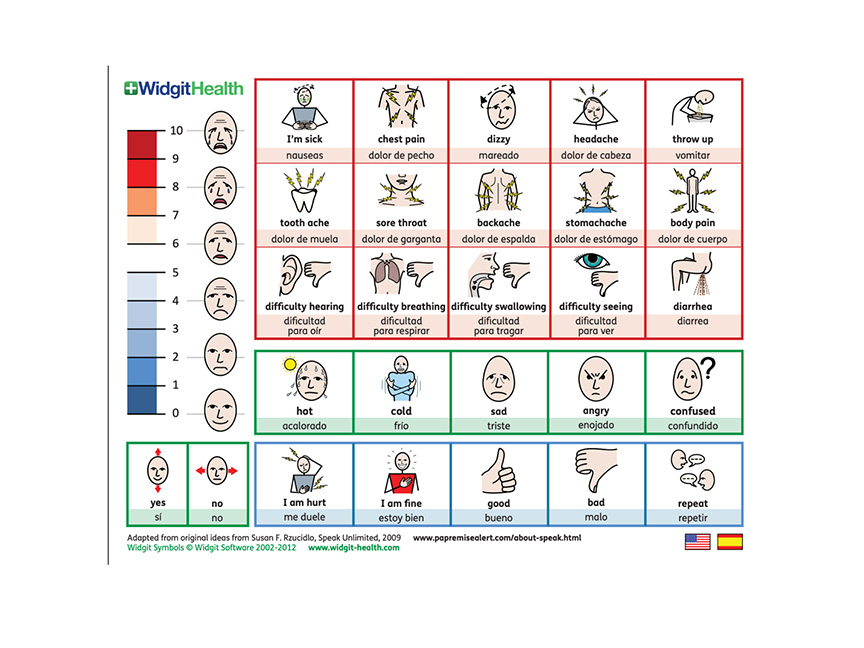Speech and Communication After a Stroke: Helping Your Loved One Rebuild Skills
“One of the hardest moments after a stroke is watching someone struggle to speak—and not knowing how to help,” explains Qualicare RN Linda Larson. Watching a loved one struggle to express their needs, thoughts, and feelings can be heartbreaking, especially when you’re unsure how to help. As many as 40% of stroke survivors experience aphasia—difficulty speaking, understanding, reading, or writing—creating significant barriers to everyday interaction.
Communication is fundamental to human connection. When that ability is compromised, it affects not only practical matters but also emotional well-being and quality of life. Yet with the right approach and tools, caregivers can play a pivotal role in helping stroke survivors rebuild these essential skills.
Understanding Communication Challenges After a Stroke
Strokes can affect communication in several different ways depending on which area of the brain has been damaged:
Expressive aphasia occurs when someone knows what they want to say but struggles to form the words or sentences. They might use incomplete phrases, substitute incorrect words, or be unable to find the right terms altogether.
Receptive aphasia involves difficulty understanding spoken or written language. The person might hear the sounds or see the words but cannot process their meaning effectively.
Global aphasia combines both expressive and receptive difficulties, creating comprehensive communication challenges.
Dysarthria affects the physical ability to speak clearly due to weakness in the muscles used for speech, resulting in slurred or slow speech.
Beyond these specific disorders, many stroke survivors experience frustration, embarrassment, and even depression related to their communication difficulties. The emotional aspect of these challenges can sometimes be as difficult to navigate as the physical limitations themselves.
SEE RELATED: What to Expect After a Stroke: Recovery and Rehabilitation
Signs Your Loved One Is Struggling with Communication
Stroke-related communication difficulties aren’t always obvious. Sometimes subtle changes indicate your loved one is having trouble. Watch for:
- Frequently abandoning conversations mid-sentence
- Showing unusual frustration during simple exchanges
- Using vague words like “thing” or “stuff” more often
- Avoiding social situations they previously enjoyed
- Answering questions inappropriately or off-topic
- Struggling to follow the thread of conversations with multiple people
Many stroke survivors become adept at hiding their communication difficulties out of embarrassment or a desire not to burden others. Creating a supportive, patient environment is essential for helping them engage despite these challenges.
Practical Strategies for Caregivers
“As a caregiver, you’re often the first to notice the frustration that builds in your client when words don’t come easily,” notes Larson. Your approach can make a tremendous difference in their recovery journey and overall well-being. Here are some effective strategies:
1. Create a Supportive Communication Environment
- Reduce background noise (turn off the TV or radio during conversations)
- Position yourself where your loved one can clearly see your face
- Use good lighting to enhance visibility of facial expressions
- Maintain a calm, unhurried atmosphere for conversations
- Speak in a normal tone—avoid speaking louder unless they have hearing issues
2. Adapt Your Communication Style
- Use short, simple sentences with pauses between key points
- Ask yes/no questions rather than open-ended ones when appropriate
- Give your loved one extra time to process information and respond
- Focus on one topic at a time rather than jumping between subjects
- Confirm understanding before moving to new topics
3. Utilize Alternative Communication Methods
- Encourage gestures, drawing, or writing when speaking is difficult
- Digital apps designed for aphasia can supplement traditional methods
- Consider using simple rating scales (like 1-10) for pain or emotions
- Picture boards like the ones shown below can be invaluable tools
4. Support Speech Therapy Efforts
- Learn about your loved one’s therapy exercises so you can reinforce them
- Practice recommended activities between formal therapy sessions
- Ask the speech therapist for specific ways you can help at home
- Celebrate small improvements—recovery is often incremental
Using Communication Boards Effectively


“Something as simple as a picture board can open up new ways to communicate and reduce anxiety for everyone involved,” advises Larson. These visual tools allow your loved one to point to images representing needs, feelings, or symptoms rather than struggling to verbalize them.
The boards shown include sections for:
- Basic needs (eat, drink, bathroom)
- Physical symptoms (pain, dizziness, nausea)
- Emotional states (sad, angry, confused)
- Daily activities (get dressed, watch TV, take medication)
- Simple responses (yes, no, I don’t understand)
When introducing a communication board:
- Start with just the most essential sections to avoid overwhelming your loved one
- Demonstrate how to use it by pointing to relevant images yourself
- Keep the board easily accessible in multiple locations
- Be patient—it may take time for your loved one to become comfortable using it
- Customize the board with images specific to your loved one’s routine and preferences
Healthcare professionals who specialize in stroke recovery consistently note that communication boards serve multiple purposes beyond just practical communication. These tools can significantly reduce anxiety for both stroke survivors and caregivers by providing a reliable method to express basic needs, creating a foundation of security that supports the overall recovery process.
The Emotional Side of Recovery
The psychological impact of communication difficulties after a stroke runs deep. For many survivors, the frustration of being unable to express themselves is even more distressing than physical limitations.
“I knew exactly what I wanted to say, but the words wouldn’t come,” is a sentiment commonly expressed in stroke recovery support groups. This disconnect between thoughts and expression can lead to feelings of isolation, depression, and diminished self-worth.
As a caregiver, addressing these emotional challenges is just as important as tackling the practical aspects of communication:
- Preserve dignity by reassuring your loved one that communication difficulties don’t reflect their intelligence or worth.
- Build confidence through frequent opportunities for successful interactions, even if they’re brief.
- Acknowledge frustration – being honest about the challenges both of you face normalizes the experience.
- Connect with others through support groups where both you and your loved one can share experiences.
- Practice self-care by utilizing respite services and caregiver support networks when needed.
Healthcare professionals widely recognize that stroke survivors tend to make better progress when they’re in supportive environments where communication attempts are encouraged and mistakes are treated as natural parts of the recovery process. Creating this type of accepting atmosphere can significantly reduce anxiety around communication attempts.
Building a Daily Communication Practice
Consistency is the cornerstone of communication recovery after a stroke. Speech-language pathologists emphasize that regular practice yields far better results than occasional intensive sessions.
What does an effective practice routine look like? Consider this approach:
- Start with structure – Designate 15-20 minute periods throughout the day specifically for communication exercises.
- Embrace real-world practice – Use everyday activities like grocery shopping or family meals as natural opportunities to practice in context.
- Make it enjoyable – Incorporate favorite games, topics of interest, or hobbies into communication practice.
- Respect fatigue limits – Watch for signs of frustration or tiredness and take breaks before they become overwhelming.
- Track small wins – Keep a simple journal noting improvements, which provides motivation during challenging periods.
“Small steps, repeated daily, can make a big difference,” emphasizes Larson. Many stroke survivors experience periods of rapid improvement followed by plateaus where progress seems to stall. Understanding this pattern helps both caregivers and stroke survivors maintain perspective during difficult phases.
Persistence through these plateaus is essential, as improvements often continue to develop even during periods that may feel like standstills. Maintaining a consistent practice routine, even when progress isn’t immediately apparent, remains an important part of the recovery journey.
When to Seek Additional Help
While many communication difficulties improve with time and practice, there are situations where additional professional support may be beneficial:
- If your loved one seems increasingly frustrated or withdrawn
- When communication challenges significantly impact safety
- If progress plateaus for an extended period
- When you as a caregiver feel overwhelmed or unsure how to help
At Qualicare, we understand the vital role caregivers play in communication recovery after a stroke. Our Care Experts can help evaluate when additional resources might be needed and connect you with appropriate specialists.
How Qualicare Supports Communication Recovery
“You don’t have to navigate it alone,” reassures Larson. “At Qualicare, we support you with tools, training, and guidance to help stroke survivors regain connection—one moment at a time.”
Our communication recovery support includes:
Professional Training – Caregivers receive specialized instruction in stroke recovery communication techniques, including how to effectively use tools like communication boards and digital applications.
Therapy Reinforcement – We work closely with your loved one’s speech-language pathologists to ensure therapy exercises are consistently practiced between formal sessions.
Ongoing Assessment – Regular evaluation of communication needs and progress helps us adapt strategies as your loved one recovers.
Personalized Care Plans – We develop customized approaches that address both the practical and emotional aspects of communication recovery.
Resource Access – From communication boards to digital tools, we ensure you have access to the most appropriate assistive devices for your loved one’s specific needs.
Whether you’re managing caregiving responsibilities yourself or seeking professional in-home support, our team understands the complexities of stroke recovery and can provide the guidance needed to navigate this challenging journey.
Taking the Next Step
Communication recovery after a stroke is a journey that requires patience, creativity, and consistent support. As a caregiver, you don’t have to navigate this challenging terrain alone. Small steps, repeated daily, truly can make a significant difference in helping your loved one reconnect with the world around them.
“Whether you’re already a caregiver or just thinking about becoming one, we’re here to help you feel confident and supported in your role,” shares Larson.
At Qualicare, we’re committed to supporting both caregivers and stroke survivors through every stage of recovery. Contact your local Qualicare office today to learn how our team can help you create a customized plan for communication recovery that addresses your loved one’s unique needs and goals.
SEE RELATED:
More questions?
Want to speak to a care expert about how to ensure the safety of your loved one during these uncertain times?
Let's connect you with the closest available Qualicare expert in your city to answer your questions.
The Qualicare Difference
Comprehensive care planning led by experienced Care Experts
"Qualicare changed everything. Mom loves her new companion, meanwhile Jack and I have peace of mind and more time to focus on the kids. "
Janette Aldermaine


 Have Questions?
Have Questions?